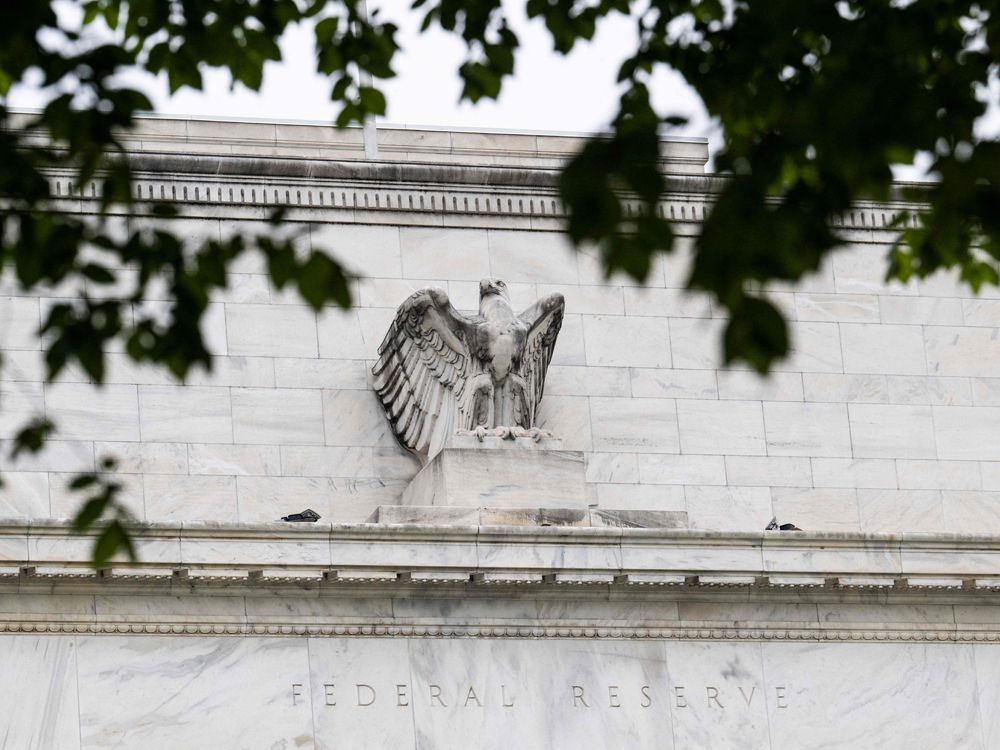Review your portfolio and consider taking a balanced path that isn’t dependent on permanently low interest rates
Publishing date:
May 06, 2022 • 5 hours ago • 3 minute read • 7 Comments
The Marriner S. Eccles Federal Reserve building in Washington, DC. Photo by JIM WATSON/AFP via Getty Images files As central banks are being forced to raise interest rates quicker than they would like due to persistently high inflation, markets are clearly showing their discontent, especially those segments most exposed such as long-duration stocks and bonds.
Advertisement 2 This advertisement has not loaded yet, but your article continues below.
In a nutshell, we’ve been spoiled: It has been far too easy to make money for far too long, and mother nature has a funny way of upending things when that happens and restoring a state of balance — or as the pundits call it, mean reverting. Take a look at the Nasdaq run from 1990 to its 2000 implosion, the oil and gas and commodities market from 2000 through to its 2014 collapse and now back to the tech sector from 2008 until today. Lather, rinse, repeat.
A decade of accommodative monetary policy has essentially resulted in investors becoming addicts looking for their next fix from central bankers who have become accustomed to quickly lowering interest rates at the first sign of trouble, but who refuse to increase them when conditions normalize.
Advertisement 3 This advertisement has not loaded yet, but your article continues below.
Interest rates have been allowed to test record lows, even pushing negative in some cases, which was fine as long as inflation was below its so-called benchmark of two per cent.
The central banks appeared to have a magical elixir that could fuel economic growth without the wage increases that usually accompany accommodative policy thanks to globalization and a steady flow of cheaper goods from Asia to Amazon to your front door. Overnight, tech companies became oligopolies promising to set up infrastructure in whichever region offered the best tax incentives and grants. Asset prices, especially real estate here in Canada, skyrocketed as speculators took advantage of nearly free money.
Then COVID-19 struck and everything changed. Supply chains became disrupted as the opening and shutting of economies disrupted trade between countries. And just when things were starting to improve, Russia invaded Ukraine, resulting in sanctions and the disruption of food and energy supplies to Europe, Africa and other regions. All of this has left many to wonder if it is now worth domesticating production and paying a higher price for goods in return for greater stability in supply.
Advertisement 4 This advertisement has not loaded yet, but your article continues below.
Then you have unemployed university students, who are unable to find work in their desired fields and have no choice but to turn to the areas where there are a record number of job openings such as at Starbucks and Amazon.
More On This Topic Martin Pelletier: Two common mistakes that can cost investors in these volatile times It’s hard to do, but sometimes investors have to admit they’re wrong and move on Don’t fight to keep your old investor habits going when they aren’t working anymore Not surprisingly, many of those heavily indebted students (until debt forgiveness is passed, that is) are demanding higher pay and trying to unionize at their workplaces. Interestingly, industry is responding: Walmart recently announced that its drivers can now make up to $110,000 in their first year at the company with the potential for pay increases with longer tenure.
This advertisement has not loaded yet, but your article continues below.
Article content These forces are causing inflationary pressures to persist and the only solution central bankers have at their disposal is to raise interest rates despite the tantrum long-duration investors currently are throwing.
The same people who for the past decade have said, “Don’t fight the Fed” are now fighting the Fed themselves, betting that the central banks will capitulate as they did in the past. But what happens if they can’t as inflation ratchets higher?
That question brings to mind a famous quote by the Chinese philosopher Laozi: “When you stand with your two feet on the ground, you will always keep your balance.”
Now is a great time to review your portfolio to determine whether you are standing on your own two feet, or if the central banks are supporting you. If they are, consider taking a more balanced path that isn’t dependent on permanently low interest rates. You might be surprised at the peace of mind that comes with not fighting mother nature.
Martin Pelletier, CFA, is a senior portfolio manager at Wellington-Altus Private Counsel Inc, operating as TriVest Wealth Counsel, a private client and institutional investment firm specializing in discretionary risk-managed portfolios, investment audit/oversight and advanced tax, estate and wealth planning.
Financial Post Top Stories Sign up to receive the daily top stories from the Financial Post, a division of Postmedia Network Inc.
By clicking on the sign up button you consent to receive the above newsletter from Postmedia Network Inc. You may unsubscribe any time by clicking on the unsubscribe link at the bottom of our emails. Postmedia Network Inc. | 365 Bloor Street East, Toronto, Ontario, M4W 3L4 | 416-383-2300
